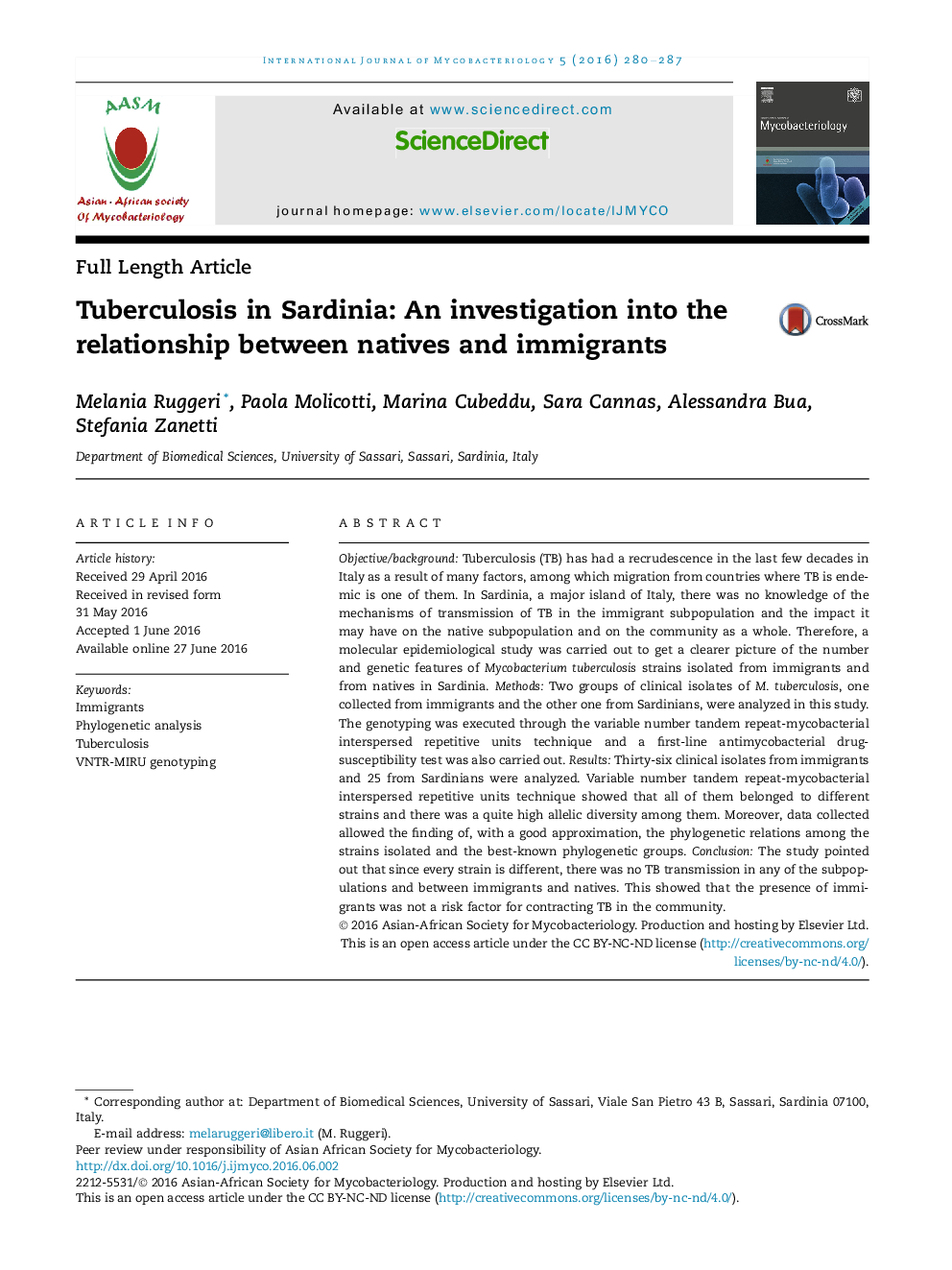| Article ID | Journal | Published Year | Pages | File Type |
|---|---|---|---|---|
| 5672652 | International Journal of Mycobacteriology | 2016 | 8 Pages |
Objective/background: Tuberculosis (TB) has had a recrudescence in the last few decades in Italy as a result of many factors, among which migration from countries where TB is endemic is one of them. In Sardinia, a major island of Italy, there was no knowledge of the mechanisms of transmission of TB in the immigrant subpopulation and the impact it may have on the native subpopulation and on the community as a whole. Therefore, a molecular epidemiological study was carried out to get a clearer picture of the number and genetic features of Mycobacterium tuberculosis strains isolated from immigrants and from natives in Sardinia. Methods: Two groups of clinical isolates of M. tuberculosis, one collected from immigrants and the other one from Sardinians, were analyzed in this study. The genotyping was executed through the variable number tandem repeat-mycobacterial interspersed repetitive units technique and a first-line antimycobacterial drug-susceptibility test was also carried out. Results: Thirty-six clinical isolates from immigrants and 25 from Sardinians were analyzed. Variable number tandem repeat-mycobacterial interspersed repetitive units technique showed that all of them belonged to different strains and there was a quite high allelic diversity among them. Moreover, data collected allowed the finding of, with a good approximation, the phylogenetic relations among the strains isolated and the best-known phylogenetic groups. Conclusion: The study pointed out that since every strain is different, there was no TB transmission in any of the subpopulations and between immigrants and natives. This showed that the presence of immigrants was not a risk factor for contracting TB in the community.
